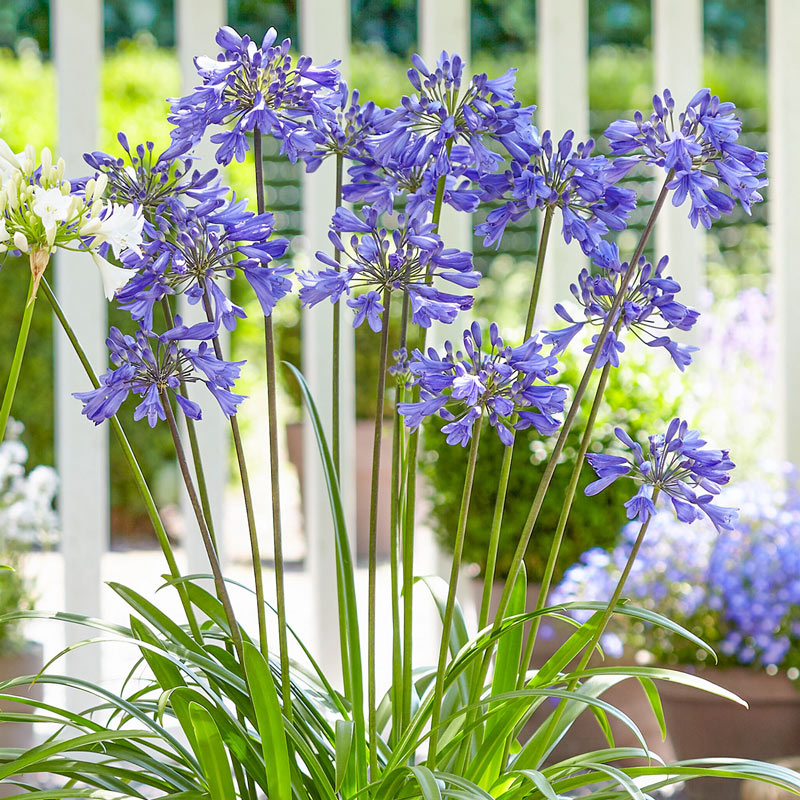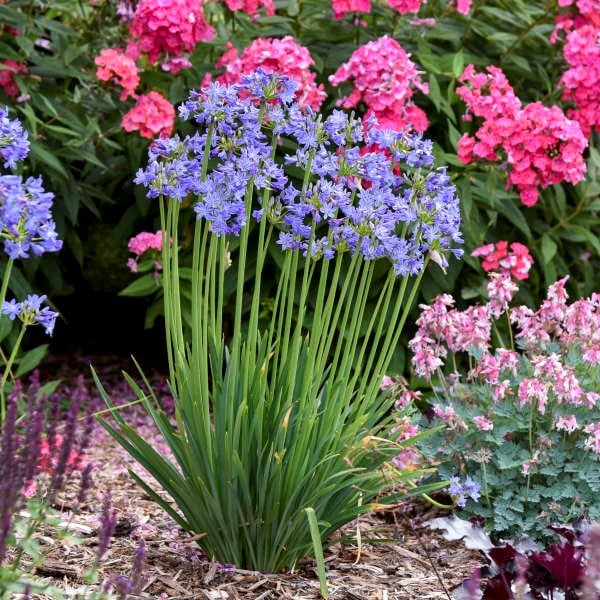Seasonal Agapanthus Treatment: Preparing for Wintertime and Summer season
Mastering the Art of Agapanthus Treatment: Vital Steps for Healthy Growth and Lively Blossoms
In the world of gardening, the cultivation of agapanthus stands as a gratifying endeavor for those that look for to nurture these elegant blooming plants. From picking the appropriate selection to understanding pruning strategies, the journey towards cultivating thriving agapanthus plants is complex and holds the crucial to unlocking the full potential of these agricultural treasures.

Choosing the Right Agapanthus Variety

When choosing the ideal Agapanthus variety for your yard, take into consideration factors such as environment viability, bloom color, and growth habit. Agapanthus, commonly called Lily of the Nile or African lily, is available in a range of colors ranging from shades of blue and purple to white. Choose a bloom color that matches your existing yard palette to develop an unified landscape. In addition, take into consideration the climate in your region to ensure the Agapanthus range you pick can prosper in your certain conditions. Some varieties are more tolerant of cool temperature levels, while others favor warmer climates. Understanding the growth behavior of various Agapanthus varieties is vital for appropriate placement within your yard. Some ranges have a clumping development practice, ideal for containers or borders, while others have a more spreading nature, suitable for ground cover or mass growings. By meticulously examining these aspects, you can choose the excellent Agapanthus selection to improve the charm of your garden.
Perfect Planting Problems
Considering the optimal environmental requirements is crucial for successful Agapanthus growing. Agapanthus plants are delicate to cool temperature levels and need to be protected from frost during winter months.
To make sure healthy and balanced growth and lively blossoms, plant Agapanthus light bulbs at a depth of regarding 2-4 inches and space them 8-12 inches apart. Mulching around the base of the plants helps preserve wetness and reduces weed growth.
Watering and Fertilizing Tips
Preserving correct dampness degrees and offering crucial nutrients are essential components in the care routine for Agapanthus plants. When it comes to watering Agapanthus, it is vital to strike a balance. These plants prefer consistently moist soil however are susceptible to root rot if overwatered.
Fertilizing Agapanthus is important for advertising healthy growth and prolific blossoms. Apply a well balanced fertilizer, such as a 10-10-10 formula, in the very early springtime as new development arises. Repeat this application every 6-8 weeks throughout the growing season. Stay clear of excessive fertilization, as it can result in lush foliage at the cost of blooms. Always adhere to the manufacturer's instructions for appropriate dilution and application methods. By following these watering and feeding suggestions, you can ensure your Agapanthus plants thrive and create lively, lasting flowers.
Pruning Methods for Agapanthus
Pruning Agapanthus plants at the suitable times and with correct methods is important for keeping their wellness and promoting optimal development and blooming. The excellent time to trim Agapanthus is in late winter season or very early springtime prior to new development arises.
Deadheading spent blossoms can also reroute the plant's energy right into creating even more blooms instead than setting seeds. If you desire to gather seeds for proliferation, leave some blossoms to completely dry and fully grown on the plant.
Bear in mind to utilize YOURURL.com clean, sharp devices to make exact cuts and decrease the threat of presenting diseases. Agapanthus. Normal trimming will certainly aid maintain your Agapanthus looking neat and healthy while guaranteeing a plentiful screen of gorgeous blooms
Managing Common Insects and Conditions
After making certain proper trimming techniques for Agapanthus, it is necessary to address usual parasites and conditions that can affect the health and wellness and vigor of these plants. Agapanthus plants are normally durable yet can still succumb particular concerns. One common insect that affects Agapanthus is the Agapanthus gall midge. This little, orange fly lays its eggs in the foliage, resulting in distorted development and flower buds that fall click to read short to open. To battle this insect, prune and ruin any damaged plant parts and consider utilizing insecticidal soap.
Additionally, Agapanthus plants can experience from root rot if they are grown in inadequately draining dirt. By being vigilant and taking punctual activity versus illness and parasites, you can assist your Agapanthus plants flourish and generate dynamic flowers. Agapanthus.

Verdict
In final thought, mastering the art of agapanthus treatment includes selecting the right selection, offering ideal planting problems, proper watering and feeding, suitable pruning methods, and resolving common bugs and illness. By following these vital actions, you can make certain healthy growth and dynamic blooms for your agapanthus plants. Keep in mind to frequently keep an eye on and preserve your plants to promote their total wellness and durability.
To guarantee healthy growth and dynamic blossoms, plant Agapanthus bulbs at a depth of concerning 2-4 inches and space them 8-12 inches apart. By following these watering and feeding tips, you can guarantee your Agapanthus plants grow and produce vibrant, long-lasting flowers.
One common parasite that impacts more tips here Agapanthus is the Agapanthus gall midge. Furthermore, Agapanthus plants can experience from origin rot if they are grown in inadequately draining pipes dirt. By following these essential actions, you can guarantee healthy and balanced growth and vivid blossoms for your agapanthus plants.